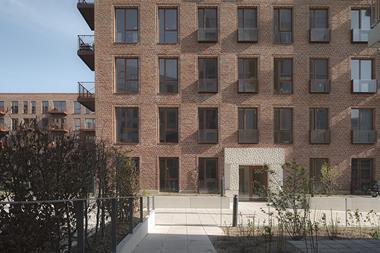The UK government’s plans to revise rules to make housebuilding easier could help institutional investors expand the build-to-rent (BTR) sector, according to the British Property Federation (BPF).
Speaking at a national planning conference in London earlier this week, Theresa May said she would overhaul the national planning policy framework (NPPF) in a bid to resolve the UK’s lack of available housing.
With a target of 1.5m new homes by 2022, the government has rightly acknowledged that all housing tenures, including both homes-for-sale and BTR, must be firing on all cylinders, the BPF said in response.
“This formal recognition in the NPPF stipulates that local councils should plan for BTR and that the sector is exempt from the provision of affordable homes-for-sale – rather, discounted market rent, or what is now known as affordable private rent, should be accepted.
“For investors and developers seeking to grow the sector, typically institutional investors who manage pensioners’ savings, this separate assessment in planning guidance is a significant boost.”
Even before the government’s announcement, 2017 figures released by CBRE have shown that institutional investment in BTR hit a record last year, with committed capital going beyond £2bn (€2.45bn). According to CBRE UK Development and Residential Capital Markets, total capital committed in 2017 rose 33% to £2.4bn from the previous year.
Also, the start of the year has already seen a number of UK BTR investments, including a €450m project to develop over a thousand apartments along with retail facilities in Dublin by APG Asset Management and Hines joint venture in January.
In the same month, Lendlease and Canada Pension Plan Investment Board announced a partnership to invest an initial £1.5bn in the sector.
Last month Barings Real Estate Advisers said it was supporting a BTR project in the Northwest of England with a £34.7m loan.
Invesco Real Estate also expanded its UK BTR programme by forward funding a development in Liverpool. Invesco again said it partnered with residential developers Patten Properties and Panacea Property Development to deliver 383 BTR units in Liverpool city centre.
Just this week, ICG-Longbow announced it would fund the construction of 2000 purpose-built homes in the UK over the next five years and alternative asset manager PfP Capital also said it has set up a £550m fund to target UK BTR opportunities.
The delivery of homes-for-sale has been historically linked to the rate of sale, BPF said, adding that BTR breaks this link.
BPF, which represents companies involved in property ownership and investment, explained that “BTR’s investors seek long-term rental income, and so are keen to develop BTR at scale and ensure their customers are happy and that the experience of renting is an enjoyable one”.
However, Adam Jaffe at Investec Structured Property Finance believes the Prime Minister’s speech, which focused on encouraging developers to desist from landbanking, would not go to the heart of the matter.
“While Mrs May speaks positively about tackling planning delays and reducing land-banking to try to increase housebuilding, these issues have been prevalent for many years and require direct action to make a difference,” he said.
“The government can legislate to help these processes but real change has to come from within the industry itself. Working together with government is the only way to create the housing supply that is so needed.”











